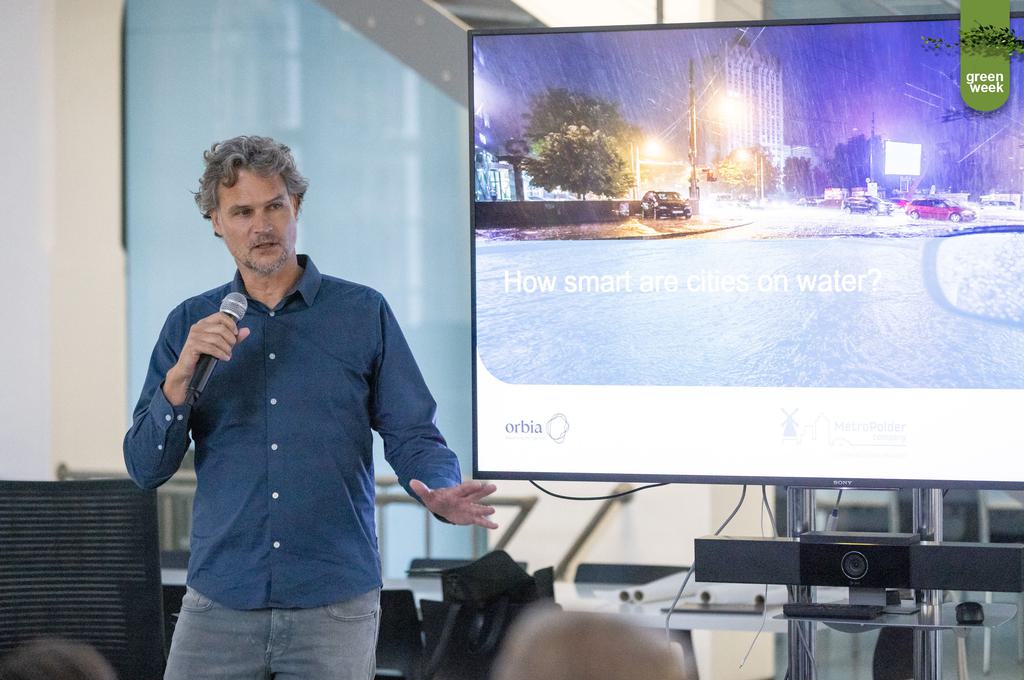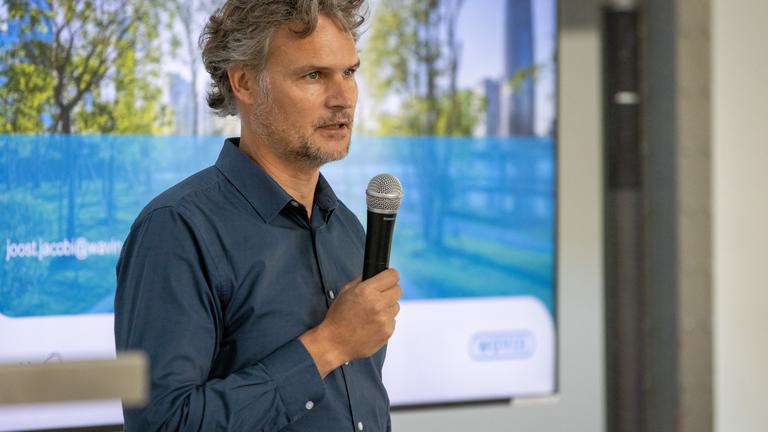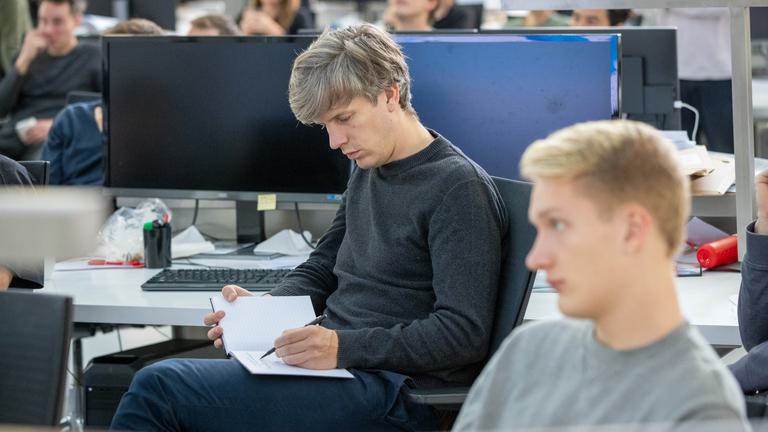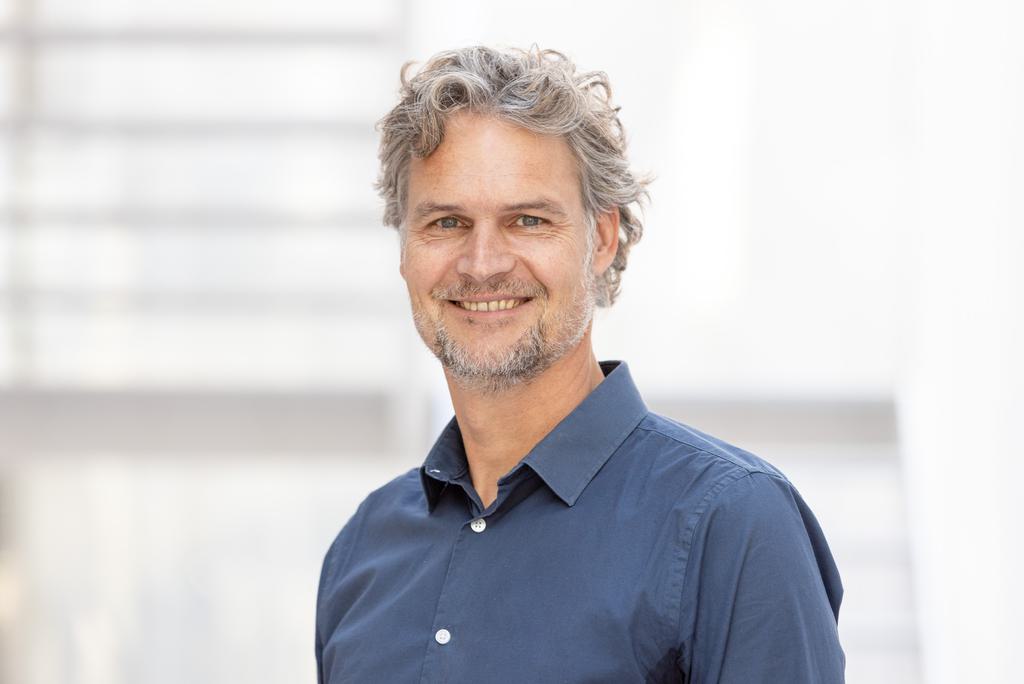It's Green Week at cepezed. This morning, Joost Jacobi gave us a glimpse of his work for Wavin, where he deals with 'water circular design' in cities. It's more of a mission than just work, it soon turned out.
windmill
One of the first images Joost shows is a small, steel windmill at the edge of a green roof with water retention. This little mill symbolises the 'polder roof' which MetroPolder developed before it merged into Wavin. Just as the Dutch polders form a water system with their windmills, polder roofs do so in miniature. At least flat roofs, especially new build, that are strong enough. And there are plenty of those: Wavin makes 'water circular designs' for several housing projects in major cities in the Netherlands, but also in New York City, for example.
5 c's
Joost and his colleagues use five c's to explain what they mean by water circular. The nod to the circular economy's r-ladder deliberately also echoes the pressing need to tackle it this way. The five c's are: catch, collect, connect, clean and control. For all five, Wavin develops smart systems. For instance, the weather forecast is connected to the valves of the retention crates. Previously retained water is released to absorb expected peak downpours.
regulations
'Release', by the way, absolutely does not mean to discharge to the sewer. Because water is not waste in Wavin's philosophy. Fortunately, regulations are increasingly going along with this. New building roofs in Amsterdam are required to be able to absorb and retain a peak rainfall of sixty millimetres. Eindhoven and Utrecht are preparing similar regulations as Amsterdam; in Utrecht it would even be eighty millimetres. This is necessary, as Joost's experience is that, unfortunately, real estate developers usually choose exactly the mandatory percentage and not a millimetre more.
text continues below the photos
Joost Jacobi: the ins and outs of ‘water circular design’



moment
Something else that needs improvement is the moment when Joost and his colleagues are involved into a project. The design process is often far advanced by then. This is the case, for instance, in many designs of residential towers equipped with green façade boxes, which require large and metered amounts of water. For this, Wavin devised a cascaded system of retention crates that are fixed right under the balconies. But Joost prefers to think along from the very start. 'We have the knowledge. I like to make an appeal here to involve us as early as possible. It makes you much more flexible in your design and in terms of your financial considerations.'
errors
Given the many questions from the audience at cepezed, this appeal did not fall on deaf ears. These questions include the material (the retention crates are made of recycled plastic) and the possibility of reuse (that is certainly the intention, the crates will last fifty years) and the conversion of rainwater into drinking water (this is not really an issue in the Netherlands, given that drinking water is still very cheap). Other questions concern the financial feasibility (minimum 400 square metres for a cost-efficient polder roof) and the danger of 'errors' when using digital systems (a backup system ensures that the valves open immediately in case of error and Wavin keeps its smart systems as simple and robust as possible).
water balance
For the future, Joost expects that it will be increasingly necessary to place retention crates in public spaces as well. 'We are now researching the crates needed to plant trees in the city. There will be more and more demand for that given the increasing heat stress.' He hopes enthusiasm for understanding the water balance will grow further in the building sector. 'A design should aim to close the water cycle. You should be aware of all types of water - rainwater, sewage, drinking water, groundwater, surface water - and connect them in a closed system.'
Joost Jacobi is senior consultant urban climate resilience at the Wavin Group and previously worked as senior project manager at Metropolder Company. This startup was acquired by Wavin.

more about the cepezed Green Week:
• Green Week at cepezed
• Andy van den Dobbelsteen: think ‘beyond the building’
• Menno Rubbens: towards an intrinsically circular building sector
• Chantal van Schaik: the carbon budget is not taken seriously
• MOR studio: architecture should leave something positive rather than use something up
→ Mail bd@cepezed.nl or call our business development team on +31 (0)15 2150000